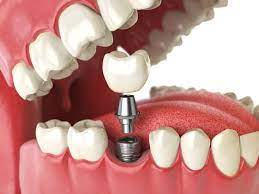
Understanding shin splints with Physiorevive
Understanding Shin Splints
Shin splint is a common incidence of pain near the shinbone, where the muscle mass are regularly overworked or injured due to excessive usage. It can often bring about pain, infection and a reduced range of movement which could hamper your everyday activities. PHYSIOREVIVE brings in a detailed writing on shin splints, its reason and the way to control it efficiently.
What Is Shin Splints?
Medial tibial strain syndrome, normally referred to as shin splints, causes pain inside the shin region. This disease often arises because of the repetitive pressure and overutilization of the muscle groups and tendons encircling the shinbone. It is a typical problem amongst athletes, in particular runners and dancers, and often emerges from abrupt escalations in activity intensity, flawed shoes choices or suboptimal biomechanics. Manifestations encompass pain, tenderness and swelling alongside the shin vicinity. Rest, ice, right footwear, gradual training progression and addressing biomechanical problems through physiotherapy at home are critical to restoration. Severe instances would possibly want clinical evaluation to rule out strain fractures or other underlying conditions.
Causes of Shin Splints
At the best physiotherapy centre in Delhi shin splits may be attributed to different factors.
• Excessive or repetitive pressure on muscle tissues and connective tissues around the shinbone.
• Sudden increases in activity intensity, overuse, flawed shoes, running on hard surfaces, or inadequate warm-up.
• Biomechanical issues, along with having an excessive arch or flat foot, result in decrease leg stress.
• Poor walking method and insufficient rest between workouts elevate the chance.
• Increased susceptibility for individuals with weak calf muscle tissue or those new to strolling.
Symptoms of Shin Splints
At the best physiotherapy centre in Delhi we have noticed shin splints often manifest via diverse signs and symptoms that may affect physical pastime and day by day consolation.
• Pain, tenderness and discomfort alongside the internal edge of the shinbone
• Initially, it is a dull ache that worsens in the course of exercising, particularly running
• Gradual progression to sharper pain that persists even at relaxation
• Possible swelling and redness in severe cases
• Soreness and muscle tightness accompany the pain
• Symptoms usually broaden progressively and might briefly improve with relaxation, most effective to recur upon resuming daily activities
• Untreated shin splints can lead to increased pain and the potential development of stress fractures
It is critical to identify and manage a condition immediately to ensure best possible outcome as far as recuperation is concerned.
Impact on Physical Activities
Shin splints significantly affect bodily activities, mainly those involving lower legs. The pain, tenderness and soreness alongside the shinbone make sports like walking, jumping, or even strolling painful. As a result, individuals may be forced to lessen or halt their exercising workouts. Activities that require prolonged standing or strolling can also be hard. The drawback in movement can affect overall fitness and hindrance in training. Ignoring the signs can result in excessive muscle injury and can further impact the muscle’s potential to heal successfully, reducing the overall bodily potential of the individual. You can read more about product information management (PIM) on our official website.
Treatment Options for Shin Splints
Shin splint remedy consists of rest, icing, ache management, a sluggish go back to interest, right footwear, biomechanical evaluation, stretching, strengthening, and addressing contributing elements via physiotherapy at home. Here are some powerful treatment plans.
Rest and Recovery
Rest and recovery are vital for managing shin splints. Cease activities causing pain to allow tissues to heal. Apply ice to lessen inflammation. Gradually reintroduce low-effect physical games as signs improve. Adequate sleep and nutrients assist recovery. Listen to your body, avoid overexertion and resume sports cautiously to prevent recurrence. If you experience signs, consisting of pain, tenderness and swelling alongside the shin, it’s beneficial to seek customized steering from a healthcare professional to rule out any underlying conditions.
Cold Therapy (Ice)
Cold remedy, the use of ice, is effective for alleviating shin splint signs and symptoms. To alleviate soreness, it’s far advocated to use an ice on the affected place for 15-20 minutes several instances a day. Ice allows reduce infection, numbs the pain and promotes recovery. Ensure a fabric barrier to prevent skin harm from direct ice touch.
Over-the-Counter Pain Relievers
Drugs like ibuprofen or naproxen can relieve shin splint pain and infection. Follow recommended doses and usage instructions. However, consult a healthcare professional before using them, especially when you have any underlying medical situations or are taking other medicinal drugs, to make sure their suitability and safety.
Vitamin D3 Supplementation
Vitamin D3 supplementation may also assist in handling shin splints. Adequate nutrition D3 contributes to bone fitness and muscle function. Consult a healthcare expert to decide if supplementation is necessary and suitable to your wishes, as immoderate intake can have damaging effects.
Gradual Increase in Activity Level
In shin splint treatment, a gradual increase in activity level is essential. Start with low-impact activities that don’t exacerbate pain. Slowly increase the intensity, frequency and duration to allow tissues to evolve. Listen to your body and keep away from pushing too much too soon. Pay interest to any pain, adjust your habits to save you reoccurrence and support proper restoration.
Flexibility and Mobility Exercises
Incorporating flexibility and mobility activities is beneficial for shin splints. Gentle calf stretches, Achilles tendon stretches and ankle mobility movements can help keep proper biomechanics, reduce muscle tightness and prevent stress at the shin. Consult a physiotherapist in Vasant Kunj for personalized guidance on safe and effective exercises that fit your specific needs and contribute to shin splint recuperation.
Physiotherapy
Physiotherapy at home is a cornerstone of shin splint remedy. Dry needling therapists in Delhi and physiotherapists in Vasant Kunj verify your gait, biomechanics and muscle imbalances to tailor a complete rehabilitation plan. They guide you through exercises to reinforce vulnerable muscular tissues, enhance flexibility and accurate movement patterns. This centered approach aids in pain alleviation, prevents recurrence and promotes a gradual return to activities ensuring excellent health and recovery.
When to Seek Professional Help
Seek professional help for shin splints while pain persists despite rest and home care, if you notice swelling, severe pain or if signs and symptoms intrude with daily activities. A healthcare expert can accurately diagnose the condition, rule out underlying issues and offer appropriate remedy guidelines, consisting of physiotherapy at home, imaging or orthopedic evaluation, to enforce management and prevent complications.
A Pain-Free Future Awaits: Choose Physiorevive for Shin Splint Recovery!
At PHYSIOREVIVE, we recognize the significance of a pain-free life for all. That’s why we offer specialized care of shin splint recuperation to help you acquire just that. Trust us to guide you toward a future free from discomfort and pain. Through evidence-based strategies, we focus on assuaging pain, enhancing flexibility and enhancing strength. We empower you to regain full mobility and resume activities without discomfort with personalized guidance on physical activities, shoes and biomechanics. Choose PHYSIOREVIVE for a complete, compassionate method to shin splint recovery. Contact us today to take step one towards a healthier, active life-style.




